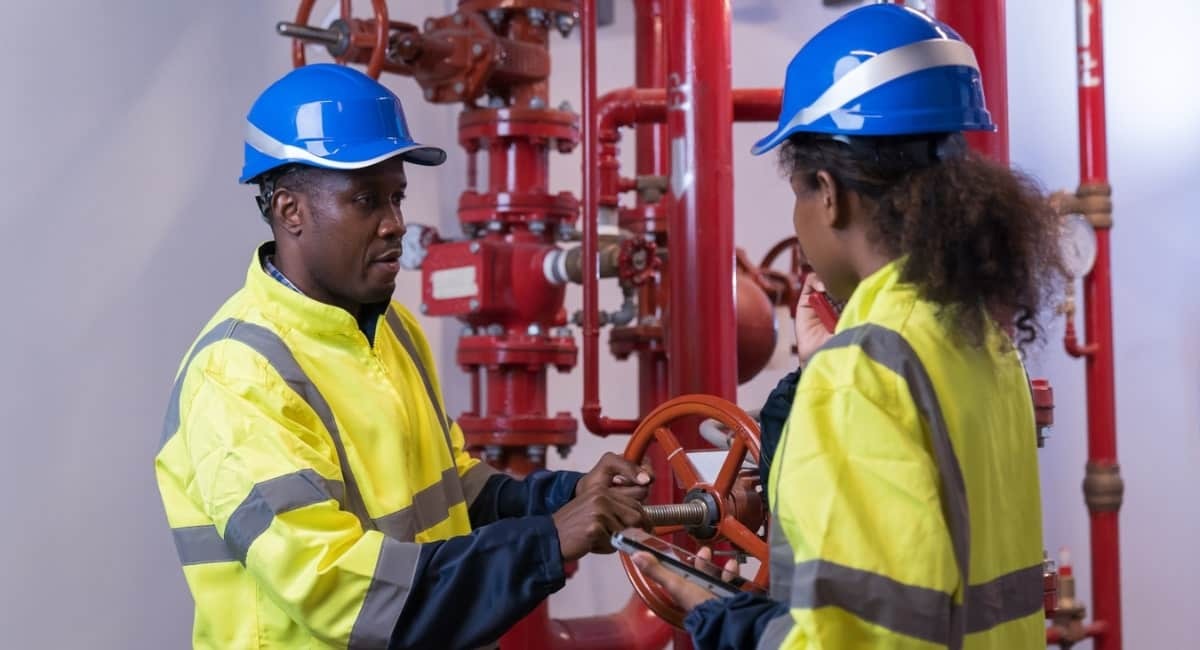Fire Pump Testing Requirements: A Step-by-Step Guide
A fire emergency never informs you before arriving; therefore, it is your responsibility to be ready to fight the crisis at any moment. As a cornerstone of active fire protection, fire pumps play a pivotal role in maintaining water supply and pressure, which is crucial for the effective operation of sprinkler and standpipe systems. From large industrial complexes to commercial structures, the proper functioning of fire pumps is paramount to safeguarding lives and property.
In the event of a fire, a well-maintained and regularly tested fire pump can make the difference between containing a blaze and facing catastrophic consequences.
In this exploration of fire pump testing, we will delve into the specific procedures and protocols involved in ensuring the functionality of these indispensable devices. So let’s wear the fire helmet and get to learning more!
What Is Fire Pump Testing?
Testing a Fire pump is a crucial aspect of fire protection systems in buildings and industrial facilities. Fire pumps are devices designed to increase the water pressure in the sprinkler system or standpipe system, ensuring an adequate water supply for firefighting activities. These pumps play a critical role in fire protection by maintaining water flow and pressure in the event of a fire.
Why do you need to test the Fire Pump?
Fire pumps, the heart of your fire suppression system, activate as you wait for the fire department to come. In the event of a disaster, they are critical rescue equipment that can save lives and commercial properties.
Fire pumps provide the necessary water pressure for fire sprinklers and hose standpipes to suppress or confine a fire. Don’t get trapped in an emergency situation without first understanding that your pump is inadequate.
Fire pump testing on a regular basis assures the protection of you and your company’s assets in the event of a fire.
Aspects Of Testing Fire Pump
Flow Test
This test measures the water flow rate delivered by the fire pump. It helps ensure that the pump can provide the necessary volume of water to the sprinkler system.
Pressure Test
Driver Test
Controller Test
For electrically driven pumps, the controller test verifies the proper functioning of the electrical components that control the pump’s operation.
Suction and Discharge Piping Inspection
Alignment Check
What is an Inspection/Testing?
Weekly Fire Pump Testing
Weekly fire pump inspections and testing are required to ensure that fire pump systems are reliable and functional. This regular technique consists of many important phases. Trust Anchorfire for professional weekly fire pump testing services to ensure your system is always functional. The following is a detailed explanation
1. Pump House/Room Inspection
- Check for cleanliness and organization.
- Inspect for any signs of water leakage or environmental issues.
- Verify that access points are clear and accessible.
2. Fire Pump System Inspection
- Inspect the pump, motor, and associated components for visible damage or wear.
- Check for loose or disconnected electrical connections.
- Verify that control panels display appropriate indicators and readings.
3. Pump Operation Test (Diesel Pump Only)
- Initiate a “no flow” start to check the pump’s response.
- Conduct a 30-minute run test to evaluate sustained performance.
- Monitor for any irregularities, unusual noises, or vibrations during the test.
4. Fire Pump System Damage Check
- Inspect pipes, valves, and fittings for leaks or corrosion.
- Check for structural damage to the pump housing or surrounding infrastructure.
- Examine pressure gauges and sensors for accuracy.
5. Pump House Condition Inspection (Repeated for Emphasis)
- Confirm that earlier identified issues have been addressed.
- Recheck cleanliness, organization, and accessibility of access points.
6. Documentation and Reporting
- Document inspection results, including any issues discovered.
- Report findings to relevant personnel.
- Record actions taken to address identified problems.
Monthly Fire Pump Testing
As of 2011, NFPA 25 requires the monthly running of any electric motor-driven fire pump. The following test technique is described to assure the pump’s continued performance and to identify any problems:
Run Duration
Pressure Measurements
Noise and Vibration Inspection
Heat Check
Discharge Check
Voltage and Amperage Readings
Results Documentation
Annual Fire Pump Testing
Full Flow Test for Pump Operation
Fire Pump Alarm Signal Test
Comprehensive Inspection and Verification
Record Keeping and Documentation
Review and Update Emergency Procedures
Training and Awareness
Conclusion
In conclusion, careful testing of fire pumps is critical to ensuring the dependability of fire protection systems. It is crucial to keep an eye on fire pump maintenance so that, in times of crisis, it can work perfectly. These methods maintain the preparedness of critical devices, from basic weekly checks to detailed annual reviews.
Make sure you have the right fire pump testing equipment to keep the system perfectly working. Moreover, caution in fire apparatus pump testing not only protects lives and assets, but it also strengthens our capacity to respond efficiently to unexpected crises. Let us stay steadfast in our dedication to preventive safety measures.
KEEP YOUR PROPERTY SAFE
Related posts
-
Fire Safety Tips for the Workplace
-
Fire Safety Tips for Hospitals
-
How to size fire pumps?
-
Different types of sprinklers?
-
What is fire protection system?
-
Fire Extinguisher Inspection
-
Fire Sprinkler System Components
-
What are the most common types of fire pumps?
-
How much does a fire sprinkler system cost?
-
What is active and passive fire protection?

